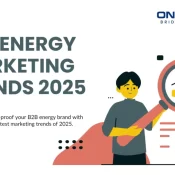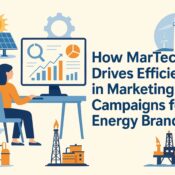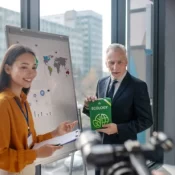
Video Marketing for Sustainability: Telling Your Brand’s Green Story
As climate change becomes a stark reality and there is an urgent need for the world to focus increasingly on environmental preservation and sustainable practices, brands are under growing pressure to demonstrate their commitment to sustainability. Enter video marketing: the ultimate way to share your sustainability journey in a way that’s authentic, engaging, and inspiring. Ready to dive in?
Why Video Works for Sustainability Stories
Video isn’t just another content format. It grabs attention, tugs at heartstrings, and makes complex ideas easy to understand. When it comes to sustainability, video gives you the tools to:
- Connect at an Emotional level: A great video can make people feel something at an emotional level, whether it’s hope, inspiration, or the importance to act.
- Communicate more clearly: Want to show your audience exactly how your eco-friendly processes & products work? A video can do that in a way words just can’t. It’s said that one minute of video is equal to 1.8 million words.
- Reach wider Audience: With platforms like YouTube and Instagram dominated by videos & reels, your green story can travel far and wide.
- Rank in Google Search: Videos are 50 times more likely to rank high on Google’s search results than just plain text. A remarkable 51% of video marketing professionals worldwide consider video to offer the highest return on investment (ROI) among all types of content.
How to Nail Your Green Storytelling
- Show, Don’t Tell People want to see what you’re doing, not just hear about it. Share behind-the-scenes footage of your sustainability practices & initiatives. Whether it’s switching to solar power or using recycled materials, let your audience see the action.
- Keep It Real Authenticity is everything. Share real stories of people impacted by your green efforts—your employees, customers, or local communities. People connect with people, not polished corporate statements.
- Teach Something New Use videos to educate your audience. Maybe it’s a quick tutorial on reducing waste or an explainer on how your product helps the planet. If they learn something valuable, they’ll remember your brand.
- Team Up with Green Influencers Eco-conscious influencers are great at spreading the word. Collaborate with them to tell your story in a way that feels natural and relatable to their audience.
- Call Your Audience to Action Want people to recycle more, try your sustainable product, or join your green campaign? Ask them to do it in your video. Make it clear, simple, and inspiring.
Video Ideas for Your Green Story
- Mini Documentaries: Share your sustainability journey—the good, the bad, and the learning moments.
- Customer Stories: Let your customers share how your products or services are making a difference in people’s lives.
- Quick How-Tos: Teach simple eco-friendly habits your audience can adopt.
- Snappy Social Clips: Post short, eye-catching videos on Instagram to reach younger, eco-conscious audiences.
How to Know It’s Working
You’ve put in the effort, but how do you know your videos are hitting the mark? Keep an eye on:
- Engagement: Likes, shares, and comments show people care about what you’re saying.
- Views: More views mean more reach. Simple as that.
- Actions Taken: Are people buying your products, signing up for your initiatives, or sharing your message? That’s the real win.
Let’s Wrap It Up
Video marketing is your secret weapon for telling your green story. It’s personal, powerful, and perfect for inspiring action.
Let’s go for it
Creating a high-impact, high-performing, and authentic video requires careful planning, compelling storytelling, and strategic execution.
- Define the goal of the video (brand awareness, lead generation, education, engagement, etc.).
- Identify the target audience to tailor messaging, tone, and visuals accordingly.
- Focus on real, relatable narratives rather than overly polished or sales-driven messages.
- Use professional lighting, sound, and camera work for a polished look
- Keep the pacing dynamic with engaging visuals and well-timed edits
- Use captions and subtitles for accessibility and better engagement
- Optimize for multiple platforms (square for social media, landscape for YouTube, vertical for mobile)
- Test different video lengths (short-form for social media, long-form for detailed storytelling).
- Tailor content for specific platforms (LinkedIn for B2B, Instagram/TikTok for younger audiences)
Build a sustainable future – one video at a time.




